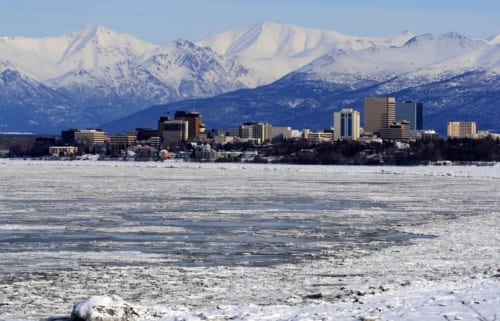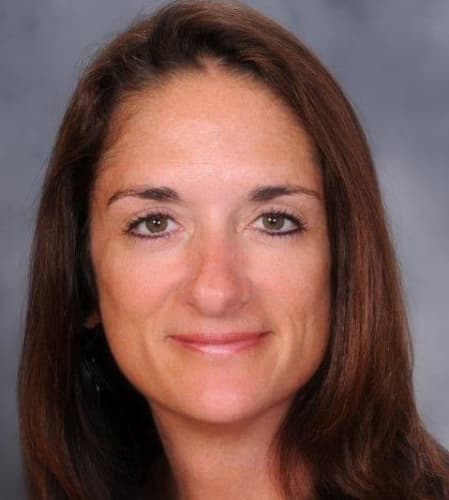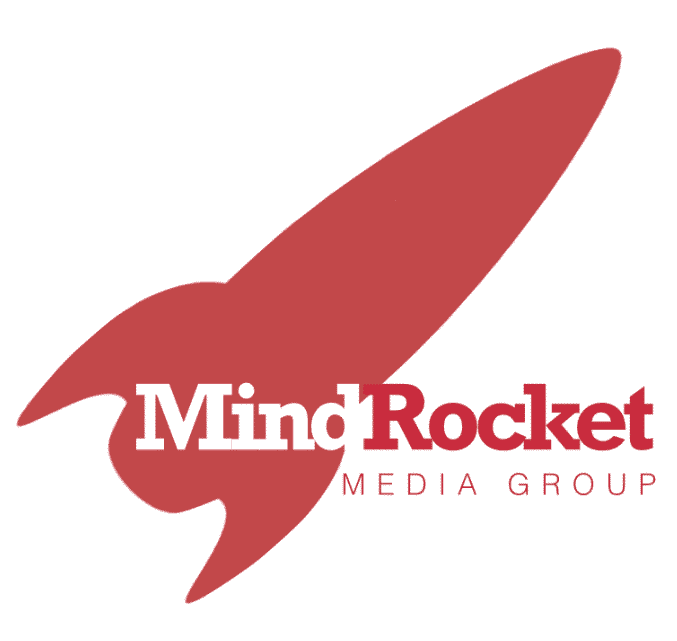Running an education system in an oil-driven economy
If you want an example of an educator who has deep roots in her community, look no further than Dr. Karen Gaborik. Born and raised in Fairbanks, Alaska, Karen has been an educator in her hometown for over 22 years. She began, as a high school teacher, taught middle school, became an assistant principal and then principal, all in Fairbanks.
The former “Alaska Principal of the Year” was named Superintendent of Fairbanks North Star Borough School District (FNSB) in 2014. When we spoke at the AASA conference in New Orleans, I asked her about some of the challenges she faces in Alaska that educators down in the lower 48 may not encounter.

Karen shared her thoughts on an economy that’s almost exclusively based on the oil industry aided by a growing surge in tourism. The unique economic makeup of Alaska affects education funding and the job choices available to students after finishing their schooling. There’s a built in acceptance of incorporating the local economy with the educational system that naturally merges the public with the private.
Geographically, Alaska faces its own set of challenges. Internet connectivity in remote areas can be slow or antiquated and in some cases non-existent. School districts are faced with the task of balancing technology improvements with an infrastructure that is busy catching up. Karen realizes the importance of technological proficiency and although pleased with the present progress, understands there is much more work to be done.
Interview
Dr. Berger: Karen, I’m so curious to learn about education and how the business of the district in Alaska is run and ways that maybe we don’t think about here.
One of the main things I’m hearing, whether it’s here in the US or abroad, is looking at the ways in which we can find alternative resources from a funding perspective to offset any shortfalls that we may be experiencing.
We’re becoming more comfortable in incorporating corporate America or the private sector in ways in which we can incorporate them in a funding to offset the shortfalls. How do you look at it in Fairbanks up in Alaska?
Dr. Karen Gaborik: Alaska is financially struggling right now. Our economy is singularly based on oil, and oil prices have really hit us. Most of our funding comes through the state from oil revenues.
We certainly need to diversify in terms of that, in terms of education funding, in general. There’s a huge opportunity there. The oil companies in Alaska are very interested in our students. There’s a need for engineers and an entire spectrum of workforce up on the North Slope in the oil fields. So there’s opportunity there.
Tourism is another great industry in Alaska so we’re tapping into that in terms of resources for kids and job opportunities, great training opportunities.
We’d like to keep them in Alaska if we can.

DB: So am I hearing you correctly that there’s a culture of acceptance incorporating in the local economy within the educational system?
KG: Yes, labor jobs, construction jobs ─ lots of construction happening in Alaska. It’s a bit of a boom/bust economy. We have lots of entry and exit points for kids and we’ve been tapping into that.
In Fairbanks, we’ve been able to establish some great partnerships with local labor unions and some apprenticeships for kids where they can actually get in front of the line in terms of adults who are trying to access those opportunities.
And those are great jobs in Alaska ─ getting a full spectrum of opportunities in Alaska that might be a little bit different than in other states.
DB: I think that’s very progressive and I think we can all learn from that. We struggle at different levels to understand how to best incorporate the private sector.
Let’s talk a little bit about technology and the way in which you’ve seen that grow or evolve in your district. Initially, we’d find a good technology. We’d find a way to pay for that technology. Then we let it run its course ─ K to 12.
In the same vein of personalizing learning at the individual student level, I think we’re starting to make different purchasing decisions around technologies that are better suited or more conducive to younger students and the teachers that are working with younger students as opposed to the high school level.
Are you seeing that as well?

KG: Yes. I want to start by saying that connectivity in Alaska is a huge issue; we actually struggle with that. It’s the great equalizer in terms of access. Even in Fairbanks, it’s not about socio-economics; it really is about geographics.
We still have people who have dial-up. I mean, it’s pretty ridiculous. And then, in some of the rural areas, it’s very, very limited, if any access to the Internet. So it’s this interesting place to live.
DB: What is the expectation from your families when it comes to technology?
KG: The school district really has to provide the infrastructure. We need to provide the devices and the infrastructure. We’re struggling with how to make sure that the students and families do have access.
In neighborhood schools, we’re looking at things other districts are doing in terms of wifi on buses and that sort of thing.
We’ve experimented with BYOD but that doesn’t quite get at it. In our district, we’ve had to open up opportunities for kids to bring their own devices. But, the district has to provide to level that playing field.
With the younger students, we’re finding that iPads are very useful tools up to about third grade. Then, we’re switching to Chromebooks for kids fourth grade and on.
In high school, it’s so content-specific. You have your more higher-end classes where kids need more powerful devices.
We’re also trying to acknowledge that even though, at home, there might not be great Internet access, every single one of our families ─ almost to a person ─ has a personal device.
It’s about communication, and tapping into that as a resource for kids and families.

DB: I’m glad you brought that up because it seems to be evolving that students are taking ownership of their learning and districts are trying to find more thoughtful ways to communicate the ownership and sort of the achievements that students have on a day-to-day basis.
How does that work if you’re talking about now that most of your families have a personal device? How does that play into your decision making with your team when you start to say, “Okay, if this is the context with which we’re working with, how do we now communicate out, build engagement, document and help to support student learning along the way within their families”?
KG: I think parents want to be engaged. They want their kids to use technology. They want them to be technically proficient.
Public education is bringing our teachers up to speed, especially the ones who have been around for a few years. There’s a certain level of comfort and complacency there that we just have to keep pushing to the edge because the kids are coming to us with the skills.
And the parents want to engage digitally. They don’t want books and backpacks going home. They don’t want letters going home. They want us to text. They want Instagram. They want I mean, that’s how they want us to communicate with them.
And in terms of resources that they can help their children with at home, if it’s something they can access online easily, it’s like a partnership. The parent may have some degree of competency in a particular content area, but, if there’s an online resource that they can together work with their child with, it’s so much more successful.
I think just tapping into that and acknowledging that parents and families are ahead of us in that respect. It would be great if public education were on the leading edge of these things. We seem to be constantly catching up.
I’m trying to get our district to embrace that culture and enthusiasm around innovation rather than sitting back to wait. I think the sit-back-and-wait mentality is not serving us well up in Alaska.

DB: No, it’s not. It doesn’t matter where we live. That definitely is not serving us well.
How do you support your educators within your school buildings now in the world where students are going from consumers to creators ─ even the youngest students? That means a paradigm shift in the way in which we support the professional learning and the professional development of our teachers so that they are up on this shift ─ not power but just in the way in which we look at a classroom.
KG: The youngest teachers are coming to us with that sort of drive for creativity. It really is re-empowering some of the teachers.
Educators like me ─ we’ve been around for 20 years and have survived “No Child Left Behind” ─ can be creative again and be innovative.
I was just speaking to a group of teachers and saying, “I remember when I started. I was so engaged in doing so many different sort of personalized strategies with kids, and then, NCLB hit and it killed it.”
But there is some fear with your older teachers in terms of believing that’s true. So it’s shifting power back to the teachers, not just empowering students but empowering teachers to be creative once again and innovative once again and to think beyond some of the strategies that they’ve been using the last few years.
If you really come at it from a project-based perspective, a personalized-learning, a student-choice-and-voice perspective, the kids will take it and run.
DB: They know what to do, don’t they?
KG: I think a good teacher will sit and watch that happen and then realize how to capture the potential of that. It is about structuring the learning setting. Which is a shift. You don’t have to be the one who knows and has all the information. You just have to create that learning environment and make sure the possibilities are there for kids. That’s a shift in thinking.
DB: If you were to give advice to those in education who are aspiring to be superintendents, given all the changes you’ve probably seen in your own career, what advice would you have on the skills that you think are needed for today’s superintendents and even those who will come after you?

KG: Certainly, technology proficiency is important but it’s not ─ just like in teaching with kids ─ the only thing. I think the most successful teachers know exactly what we’re trying to develop in kids ─ the ones who truly know how to collaborate, to be innovative and creative, and stretch themselves. The ones who take risks.
When I’m looking at teachers and even education leaders in schools, I’m looking for risk takers. I’m looking for people who are willing to push the edge a little bit and do things a little differently. That could be a scary place to be.
DB: I think it’s good. I’ve got a two-year-old who is a risk taker.
KG: I think that’s what’s going to serve our students best. We have to be what it is we’re wanting to build in our students. If we want innovation, creativity, and collaboration, then we have to emulate those things.
Again, technology is a tool. If you have those skills, terrific. But it’s those other pieces that are really important.
About Dr. Karen Gaborik
 Dr. Karen Gaborik has been an educator in the Fairbanks North Star Borough School (FNSB) District since 1995. In April 2014 the Board of Education appointed Dr. Gaborik as interim superintendent, and in November 2014 the board approved a 3-year contract for Dr. Gaborik through June 2018. Dr. Gaborik has earned numerous awards throughout her career including Alaska Principal of the Year.
Dr. Karen Gaborik has been an educator in the Fairbanks North Star Borough School (FNSB) District since 1995. In April 2014 the Board of Education appointed Dr. Gaborik as interim superintendent, and in November 2014 the board approved a 3-year contract for Dr. Gaborik through June 2018. Dr. Gaborik has earned numerous awards throughout her career including Alaska Principal of the Year.
Dr. Gaborik holds a Bachelor of Arts in speech communication from the University of Alaska Fairbanks and earned her teaching certification through the Teach for Alaska program. She holds a Master’s of Education from the University of Alaska Anchorage in special education. She received her Doctorate of Education in K-12 education administration from Argosy University.
As a lifelong Fairbanks resident, Dr. Gaborik brings a unique and valuable perspective to the position of superintendent as she has both attended and worked at district schools. She began her career as a teacher at the high school level and later served as a middle school teacher and as assistant principal and principal of Lathrop High School.
Follow Dr. Karen Gaborik and FNSB on Twitter
Author
Dr. Berger is one of many industry education correspondents for the Mind Rocket Media Group, An educator and former school administrator. His video interview work and conversational podcasts have been featured in various media outlets. He often hosts education panel discussions and develops strategic content. As an academic Dr. Berger is a guest lecturer at Vanderbilt University’s Owen Graduate School of Management. A former assistant principal, he has been an adjunct undergraduate professor and developer of online college courses. He is a passionate Detroit sports fan who has also adopted Nashville sports teams as his own.
Contact the Mind Rocket Media Group if you are interested in an industry interview and a placement on EdCircuit.

